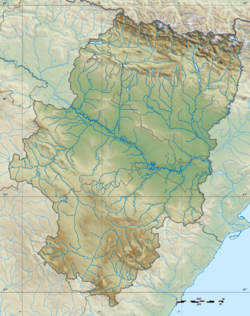| Arcillas de Morella Formation | |
|---|---|
| Stratigraphic range: | |
| Type | Geological formation |
| Underlies | Xert Formation |
| Overlies | Artoles Formation |
| Lithology | |
| Primary | Sandstone, clay |
| Other | Marl, limestone, siltstone, conglomerate |
| Location | |
| Region | Europe |
| Country | Spain |
| Type section | |
| Named for | Morella, Castellón |
| Named by | Canérot et al. |
| Year defined | 1982 |
The Arcillas de Morella Formation is a geological formation in Spain whose strata date back to the Barremian stage of the Early Cretaceous. [1] Dinosaur remains are among the fossils that have been recovered from the formation. [2]









